

[ SUNDAY TRAVEL ]
3 DAYS IN CUSCO AND MACHU PICCHU

In the Land of the Inca The mighty Incas created some of the world's finest ancient stone architecture, and through a miracle of preservation, much of it still stands in Peru at Cusco and Machu Picchu, high in the Andes.
A trip to the magical region of Cusco
in Peru is literally a trip back
through timeBy Dennis Callan
Special to the Star-BulletinFour hundred years ago, the Inca Empire stretched the length of South America. It was the largest nation of the New World, with a population of around 10 million. Cusco's capital was a glorious city of palaces and temples made with perfectly cut stone blocks decorated with gold and silver. The nearby renowned Incan site of Machu Picchu is even more spectacular, majestically framed by the mountains.
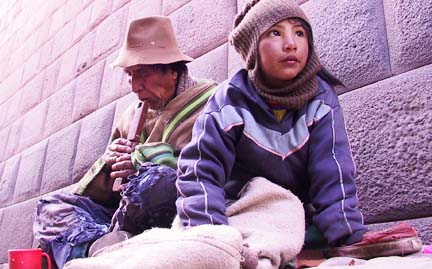
These wonderful structures have survived warfare, fire, earthquakes and modern construction, and are easily accessible. Three days will give you plenty of time to see this region, and because the American dollar is strong in Peru, you can spend time there in luxury.The ancient sites and the colorful culture of Cusco's Quechua people, who are direct descendants of the Incas, make a powerful combination. Plan to take a lot of pictures on this trip. You will encounter colorful people, beautiful ruins and glorious natural scenery. Here's a suggested schedule:
>> Day One: Relax, let your body adjust to the elevation, then take a walk through town.
>> Day Two: Visit Machu Picchu.
>> Day Three: Explore more of Cusco, and visit the major sights just outside of town.
Day 1: Getting acclimated
Fly to Cusco from Lima, crossing over some of the highest snow-capped peaks of the Andes. Be sure to reserve awindow seat on the left side and enjoy the view.
Upon landing, plenty of taxis await to take you into town for a reasonable price.
When you get to your hotel, rest for a while. It's important to become acclimated to the extreme elevation, 11,300 feet above sea level. The lower oxygen content gives many new arrivals a headache or at the least makes them feel slightly woozy, light-headed, dizzy or breathless.
The traditional cure for this feeling is coca tea, the universal drink in the Andes. It's not what you might think. It contains no alkaloids, no cocaine and is not illegal. It's just a soothing, mild green tea. If you like it, you also can bring some home with you legally.
Another cure is to lie down and take a nap. Most hotels have oxygen tanks if needed. After resting for a few hours, you will be ready for some activity.
Begin your explorations by going for a walk in the old part of town. The historic center of Cusco presents a harmonious combination of massive Incan walls with Spanish Colonial structures built around them, and interesting shops and restaurants. The resulting mix of styles lends the area a unique charm with many nooks and crannies to explore.
These 600-year-old walls were built with giant blocks of carved limestone that fit together so well they required no mortar. Look for the original walls along Loreto, Maruri and San Agustin streets. Smaller sections of impressive stonework are scattered on other streets, especially in the blocks just southeast of the main square. Grab a guidebook or local guide to find them, and wander into some of the back yards and open courtyards to see even more of these spectacular walls.
Your understanding of these sights will be enhanced by a local guide. The staff at your hotel should be able to recommend one, or you can find one at the numerous tour offices in and around the main square, the Plaza de Armas.
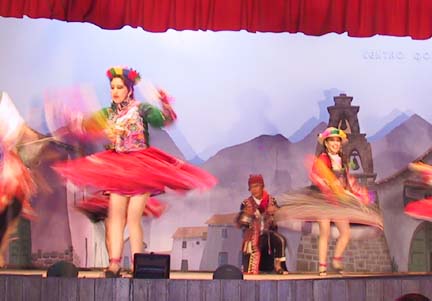
Unfortunately, very little is actually known about the Incas, therefore much of what guides will tell you is conjecture. The Incas had no written language, and their culture was so devastated by the conquistadors that most oral traditions were lost. The Spanish soldiers, obsessed with gold, had little interest in recording local history. Archaeological surveys and excavations have filled in some of the blanks.Despite the gaps in knowledge, you can still admire the beauty of Cusco's stone structures, which often display a combination of Colonial-style roofs built on the Incan walls. The Spanish tradition was to demolish the thatch roof of the Incan buildings and put tile roofs on the remaining foundation and supporting walls. Several major fires and battles also destroyed many of the upper parts of buildings, but the solid Incan foundations survived. This produced an enjoyable architectural amalgamation. After a while you will be able to tell the difference between the original Incan walls and later, cruder versions.
The main religious structures of a place are usually worth visiting. This is true of the Cathedral and the Coricancha, the principle Incan temple. Construction of the Catholic cathedral began in 1555, so it is built in the elaborate Spanish Renaissance style. Many interesting paintings done in the style of the Cusco School decorate the vast interior. Native artists learned Renaissance and Baroque techniques of the 15th and 16th centuries from Spanish painters who came to the colonies. They adapted the style to include local traditions. For example, one painting of the Last Supper features Christ presiding over a meal of guinea pig, a local delicacy, with the Crucifixion included in the same frame. These rare paintings are highly prized. On the other hand, inexpensive watercolors are widely available in the streets and shops of Cusco. These make excellent souvenirs.
Before the Christians arrived, the Incas worshipped a naturalistic pantheon of gods reflecting the world around them. These included gods representing the sun, moon, lightning, stars, mountaintops, rainbows, water and earth. The sun was most important. Every Incan town included a temple of the sun. It was of the highest importance, with the finest smooth walls and gold offerings.
The sacred structure Coricancha was the center of the Incan Empire because it was the capital city's temple of the sun. Careful placement of windows and doors may have enabled the Incas to observe the motions of stars and the moon in order to monitor the seasons and incorporate them as part of their rituals.
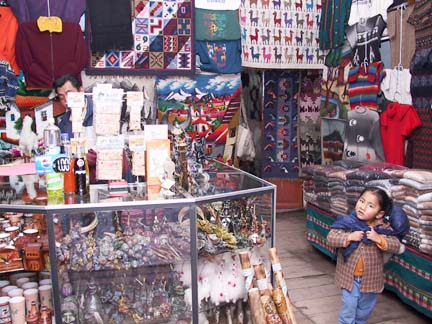
The Dominican Order of Santo Domingo was given charge of the Pacific coast of South America by the pope. The Dominicans considered all local religions pagan cults to be obliterated. Because of that cultural destruction, we know very little about the native history. The Dominicans destroyed part of Coricancha and built their own church on top of the main temple to conceal it. But an earthquake in the last century cracked the church walls and revealed the smooth walls of the ancient temple, well worth seeing today.After exploring the historic buildings, you can check out Cusco's many shops. Most are on the Plaza de Armas and within a few blocks around the square. If the altitude is still tiring you, save your shopping energy for the final day.
Inexpensive dining options abound in the main square and the nearby blocks. These restaurants offer a good sampling of the delicious local cuisine, which is based on staples of corn, potatoes and quinoa, a delicate grain.
Day 2: Machu Picchu
Cusco alone is an excellent reason to fly to Peru, but one of the world's most spectacular archaeological sites, Machu Picchu, is just 3 1/2 hours from Cusco by train through the scenic Urubamba Valley. Machu Picchu will not disappoint you, no matter how high your expectations.Orient Express operates the best train to Machu Picchu. The ride begins at dawn, and you will enjoy coffee and a light breakfast in newly refurbished contoured seats while gazing at the breathtaking scenery.
The train leaves Cusco via steep switchbacks that take you above the sleeping city, affording a sunrise view of thousands of clay-tiled roofs stretching for miles across the broad valley. Then it rolls along a 12,000-foot plateau on which are some of the world's highest farmlands and villages. Then for two hours the train follows the Urubamba River downhill through a deep valley, its fertile riverbank dotted with farms.
The elevation at the bottom is about 8,000 feet. Your body will feel much more comfortable, and you should not have any more problems with altitude sickness at Machu Picchu.
The Incas were masters of irrigation and had some of their best farmlands in this valley. Remnants of Incan farm terraces are found in such great numbers throughout the Andes that they constitute the largest archaeological complex in the entire Western Hemisphere. It is estimated that the ancient ones cultivated areas three or four times larger than today's farmers, with strategies that were more advanced than "modern" techniques.
The ancient stone masters channeled the wild riverbed into a productive canal that watered the terraces. You may also spot several Incan bridge foundations, with modern bridges built on top. Snow-capped peaks in the distance and farmers harvesting in their fields add further drama to the scenery.
You arrive in the trinket-filled little village of Aquas Calientes before you know it, and transfer to a minibus that will take you up the hill to the glorious site. It is a fun 15-minute ride as the van bounces along the switchback dirt road, careening to the edge of the precipice while you look down at the vanishing valley bottom.
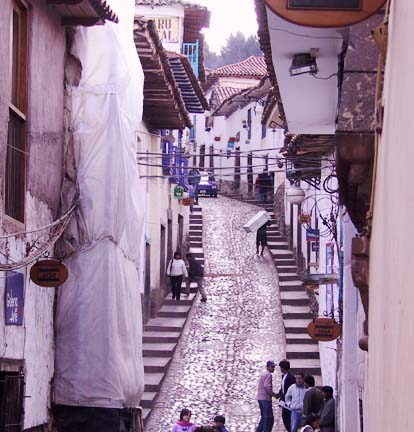
The Peruvian government recently doubled the Machu Picchu admission to $20 as part of an effort to shield the ruins from damage caused by the daily 2,500 visitors. Visitor arrivals are expected to triple in the next four years.After you exit the bus, you'll enter the gates. As you walk around the first corner, there is the monument in all its glory! If Machu Picchu does not impress you, you might as well stay home from now on.
The site is divided into the residential and agricultural sectors and a village complex that housed an estimated 400 to 800 people. Walk through the houses on the right side of the main open square, then climb the small hill on the left side to see the groupings of temples and ceremonial sites, along with more houses. A spectacular round temple of the sun has the smoothest walls in town.
The main altar of Machu Picchu is called the "hitching post of the sun," or Intiwatana, which may have been used in a religious ritual that marked the change of seasons.
There are many mysteries about Machu Picchu. It was abandoned before the Spanish arrived, and no Incan stories about it remain. All we know is that it was an Incan village, due to its distinctive architectural style. We don't know if it had any special function or ceremonial significance beyond that, although researchers and authors have constructed theories.
Machu Picchu was a forgotten ruin until being rediscovered by Yale historian Hiram Bingham in 1911. Yes, he was a descendent of Hawaii's Hiram Bingham, and he deserves credit for "finding" Machu Picchu, although the local residents always knew it was there -- and were even using some of the terraces for their farm plots. Local farmers brought Bingham to the site, and he jumped to the erroneous conclusion that it was Vilcabamba, the last refuge of the Incas, built by Manco Inca, the last Incan leader before the conquistadors' victory. Bingham was wrong about that, just as he was wrong about believing the populace consisted mostly of women -- the "Virgins of the Sun." Vilcabamba was later discovered several hundred miles farther into the jungle toward the Amazon, and the number of excavated skeletons were evenly divided between male and female.
Regardless of the unknowns, Machu Picchu is so spectacular, and the buildings so well made, that it feels like a town built for a special reason. You can make up your own mind. Just walk through the abandoned homes and lanes, climb the stairs to the altars, take in the views and absorb the magical feeling of this place.
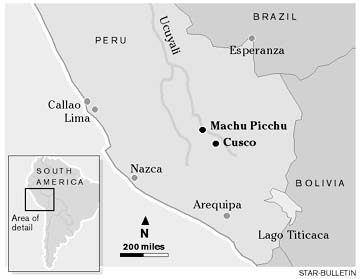
If you want to find the postcard view of the site, you have to walk up a little hill -- just a short hike, like walking up a 7-story building. You will see the hill with the farming terraces and the thatched hut overlooking the village. Keep on going for a few minutes, and you will soon be at the top of the world, looking down on one of mankind's most special creations. Sit down and soak it all in.Three hours is probably enough time to fully explore the site. This enables you to head back down the hill to the train station and catch the afternoon train back to Cusco. If you really want to get carried away by this place, you can spend the night at the small hotel at the top or pick from several at the bottom of the hill in Aquas Calientes. If you spend the night, you have the site to yourself in the late afternoon and early morning, when the tour groups are on the Cusco train.
Your day trip will probably show you enough of the site, however, and you'll be ready to go back to Cusco. On the way back there is one more adventure awaiting the hearty traveler: Ollantaytambo, the only pristine Incan village still occupied, where locals live in stone-walled homes built 600 years ago.
Ollanta, as it is called, is about halfway on the train's route to Cusco along the Urubamba Valley. It is quite rewarding to visit this village and experience the simple farming life that survives. If you choose to do so, however, you will have some difficulty getting back to Cusco, because the train you just got off was probably the last one of the day.
You have a few choices. The day before you go to Machu Picchu, arrange with your Cusco hotel to send a car to meet you in Ollanta and drive you the two hours back to town. Alternatively, you can spend the night at the small Tourista Hotel in Ollantaytambo, which gives you time to explore the impressive Incan ruins on the hill just above town. Then, take a morning train back to Cusco. If you plan ahead, you will experience a rare glimpse back in time at this charming village.
Day 3: Cusco
In the morning, arrange a half-day tour to several of the important sites on the outskirts of town. You will need a guide who can drive you there. The main historic sites to see are Sacsaywaman, Q'enqo, Puka Pukara and Tambomachay. Then you will have the afternoon free for shopping back in town or walking more of the Incan alleys near the main square.Q'enqo is another well-preserved archaeological site, with a large monolithic stone in the center surrounded by a platform, with a cave beneath the site that was partly carved by the Incas and shaped into what appears to be an altar. The precise function of Q'enqo is unknown; it might have been a temple, an astronomical observatory or funeral chamber. It is spooky to walk into the underground passage and come out the other side.
Puka Pukara is a fortified palace with a variety of rooms, terraces, aqueducts and surrounding walls, all of which might date to pre-Incan civilizations. The Incas did not establish their culture until approximately 1400, but other societies preceded them. Tambomachay is a series of three stone terraces with water springing from them and flowing through precise channels, so it might have been a temple to the god of water.
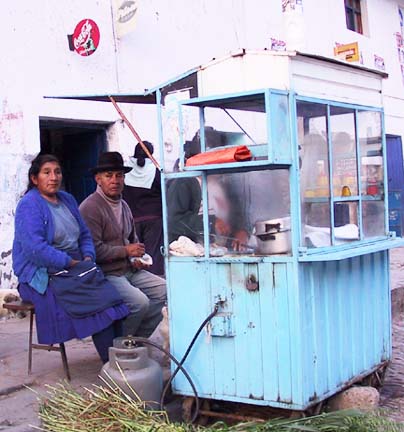
Most impressive of all the sites in Cusco, and perhaps in the entire Incan Empire, is Sacsaywaman, the massive stone structure on a hill a mile from town. This is among the most wonderful megalithic stone structures ever built by man. The giant complex runs a length of 1,000 feet, with three mighty zigzag walls made of enormous stones, some of which are 15 feet high and weigh more than 300 tons. This site presents another puzzle because no one knows what it was built for. It might have been a temple to several gods, including lightning, since it looks like an enormous lighting bolt frozen in stone.Commonly called a fortress, Sacsaywaman probably did not have that function in prehistoric times because it is rather isolated and could not defend Cusco in any meaningful way. However, we know that it was used as a fort during a critical confrontation between the Spanish and Incas in 1536 -- an amazing battle that turned the tide of the war against the natives and led to their defeat. A small band of Spanish soldiers led by Juan Pizarro had been occupying Cusco for two years when Manco Inca, the last native leader, organized an insurrection that surrounded the town and began a ruthless attack. Outnumbered 100-to-1, the Spanish fought their way out of town and besieged the native stronghold at Sacsaywaman in a relentless assault, killing about 5,000 Indians in a bloody battle that sealed the Spanish conquest of South America.
The entire story of Spanish conquest is beyond belief, and reached its astounding climax here. How could an army of 200 soldiers overpower an empire of nearly 15 million people? "Guns, Germs and Steel" is the title of a fascinating Pulitzer Prize-winning history book by Jared Diamond that explains this and many other chapters of world history with a systematic analysis that is neatly summarized in the title. Introduced disease killed about 90 percent of the New World population, while superior weapons and strategies finished off the survivors. Hunger for gold was the only reason for the conquest.
World history is filled with repugnant episodes of greed and slaughter, which are perfectly illustrated here in Cusco and especially at Sacsaywaman.
That is enough history for our visit. Let's go shopping!
Some of the handicrafts that are special to Cusco include handmade wooden picture frames; "marquetry" boxes with intricate designs of inlaid woods in different colors; wooden frames for windows, doors and balconies; and many local weavings. One of the most popular items is the alpaca sweater, which you will find in shops and on the arms of many vendors along the sidewalks. Colorful clothing of cotton or wool will entice you. Jewelry is always a good purchase here, with thousands of locally made silver earrings, necklaces and rings. Painted gourds, woven wall hangings and wooden statues are easy to pack. You can also buy coca tea, a most unusual gift.
As you walk the little streets from Plaza de Armas, heading uphill you will find many small shops operated by artisans selling their goods at fair prices. You must always bargain with the merchants, especially the aggressive vendors clogging the sidewalks. A classic purchase here is the small watercolor painting, illustrating the charming cobbled lanes of town and the pretty scenery of the surroundings.
Before we go, there is one final suggestion: Tonight, take in the folk show at Centro Qosqo on Avenida Sol, Cusco's main street. This simple hourlong performance of traditional song and dance will mesmerize, and provide a peaceful ambience for reflections back on your magical visit.
DENNIS CALLAN SPECIAL TO THE STAR-BULLETIN
The Hotel Monasterio is Cusco's only 5-star hotel.
>> Flights. Varig Airlines offers daily non-stop flights from Los Angeles to Lima. GOING TO CUSCO AND MACHU PICCHU
>> Hotels. A popular hotel in Cusco is Hotel Libertador, San Agustin, 400. Call 23-19-61. The cost is approximately $160 per night.
Considering the strong dollar, you might want to splurge on the finest hotel in town, the Hotel Monasterio, at $240 for double occupancy. This wonderful hotel is located in a 17th century building, once the Seminary of San Antonio Abad. In 1995, the seminary was converted into a hotel while still preserving its original Spanish Colonial architecture, including two cloisters. The bishop still owns this property, so you will be in good hands here.
The only five-star hotel in town is conveniently situated two blocks from the city's central square, the Plaza de Armas, and is just a 10-minute drive from the airport. The hotel has its own gourmet restaurant, coffee house and bar. It is operated by the luxury Orient Express group, which also operates the train to Machu Picchu, and they have a small hotel at that site as well, the 32-room Machu Picchu Sanctuary Lodge ($262), which enjoys a unique position at the entrance of the historic park. The unequaled location of this three-star hotel allows you easy access to this mythic site, as well as breathtaking scenery and bird watching from the mountaintop and opportunities to hike the Inca Trail. Call (084) 24-06-96.
There are several other hotels at the foot of the mountain in Aquas Calientes, which would give you a similar opportunity to linger at the site, and get there first thing in the morning. You might consider the Machu Picchu Pueblo Hotel ($160). On the edge of Aguas Calientes on the Urubamba River, this is a compound of tile roofed casitas scattered sloping up from the railway station, amid the mountain tropical vegetation of the upper Amazon basin. Reservations can be made by fax (511) 422-4701, or email, reservas@inkaterra.com.